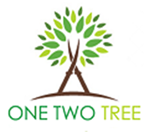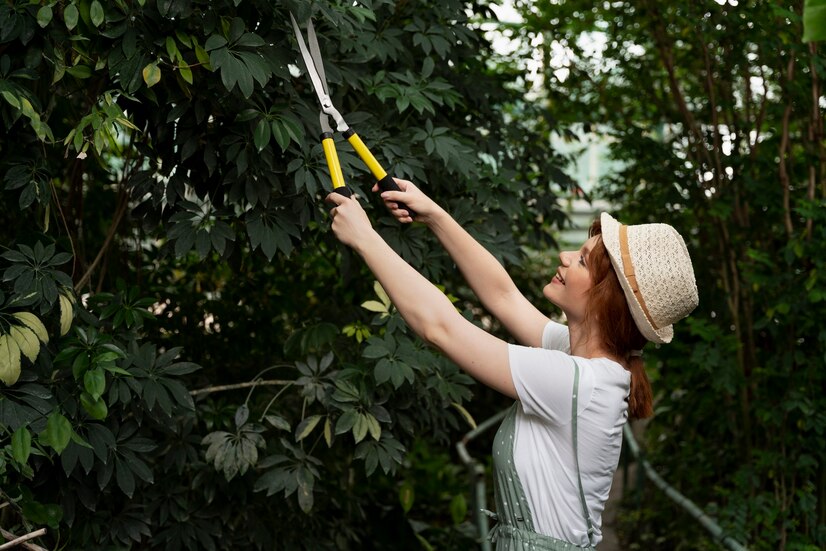A well-maintained landscape with healthy, well-trimmed trees can significantly enhance the curb appeal and value of your property. Tree trimming plays a crucial role in maintaining the health and beauty of your trees, as well as ensuring their safety and structural integrity. At One Two Tree, we understand the importance of proper tree trimming and are dedicated to helping our clients achieve thriving, attractive landscapes through skilled tree care services.
In this article, we will discuss the numerous benefits of professional tree trimming, including improved tree health, visual appeal, and safety. We will also delve into the various trimming techniques employed by our expert team at One Two Tree and the factors to consider when determining the optimal tree trimming schedule for your landscape. Whether you’re looking to maintain the health and appearance of your existing trees, mitigate potential safety hazards, or promote healthy growth for newly planted trees, we’ll provide valuable insights to help you achieve your goals.
Choosing to work with One Two Tree for your tree trimming needs ensures that your trees and landscape receive the utmost care and attention, allowing them to flourish in a safe and visually appealing manner. As you continue reading, we hope to instill a deeper understanding of the importance of tree trimming and demonstrate how partnering with our knowledgeable team can elevate your landscape’s beauty and health.
Enhance Your Property’s Appeal with Strategic Tree Trimming by One Two Tree
Professional tree trimming is an essential aspect of tree care that can benefit both the health and appearance of your trees and landscape. In this article, we discuss the importance of tree trimming and share various techniques, factors, and expert tips to help you achieve your landscape goals.
1. Benefits of Professional Tree Trimming
Tree trimming provides numerous benefits, primarily improving tree health, safety, and visual appeal. Here are some key advantages:
– Improved Tree Health: Trimming removes dead, diseased, or damaged limbs, promoting healthy growth and reducing the risk of disease spreading.
– Enhanced Visual Appeal: Neatly trimmed trees contribute to an attractive, well-maintained landscape, adding curb appeal and value to your property.
– Increased Safety: Regular trimming eliminates hazardous limbs and prevents potential damage to property or injury to people and pets.
2. Tree Trimming Techniques
Various tree trimming techniques suit different tree species, sizes, and purposes. Some of the most common methods include:
– Crown Thinning: Selectively removing branches to increase light penetration and air circulation throughout the crown, maintaining the tree’s natural form.
– Crown Raising: Pruning lower branches to elevate the tree’s canopy, improving visibility and clearance for pedestrians, vehicles, or structures.
– Crown Reduction: Reducing the tree’s size by trimming branches and foliage while maintaining the tree’s structural integrity and natural form.
– Structural Pruning: Maintaining or improving a tree’s strength and form by addressing issues such as weak branch attachments, competing leaders, and potentially hazardous limbs.
3. Factors Affecting Tree Trimming Schedule
The optimal tree trimming schedule varies based on factors like tree species, age, and environmental conditions. Considerations for scheduling tree trimming include:
– Tree Species: Fast-growing species may require more frequent trimming, while slow-growing varieties need less maintenance.
– Tree Age: Young trees may need more frequent, formative pruning to establish desired branching structure and maintain healthy growth.
– Health and Vigor: Sick, weak, or infected trees require more attentive care to ensure they regain optimal health.
– Season: For most trees, late winter or early spring is the ideal time for tree trimming, as trees are dormant and less vulnerable to stress or disease.
4. Tips for Successful Tree Trimming
To achieve the best results for your trees, consider these expert tips:
– Clean and Sharpen Tools: Using clean, sharp tools for tree trimming minimizes damage to tree tissue and reduces the risk of spreading disease.
– Use Proper Technique: Make precise cuts at the branch collar without damaging the trunk to encourage faster healing.
– Assess Overall Tree Health: Monitor your trees regularly, checking for signs of disease, infestation, or damage that may warrant immediate attention.
– Consult an Expert: Engage the services of a skilled tree care professional to ensure your trees receive the best possible care and maintenance.
Conclusion
Strategic tree trimming is key to maintaining healthy, safe, and visually appealing trees and landscapes. By understanding the benefits of professional tree trimming and the various techniques and factors involved, you can make informed decisions to care for your property’s trees effectively.
As you embark on your tree care journey, consider partnering with our expert team at One Two Tree. With our extensive experience and passion for tree service in Marietta, Georgia, we can help you create a thriving, attractive, and safe outdoor environment tailored to your needs. Reach out to One Two Tree today to learn more about how our tree trimming services can elevate your property’s beauty and value.

